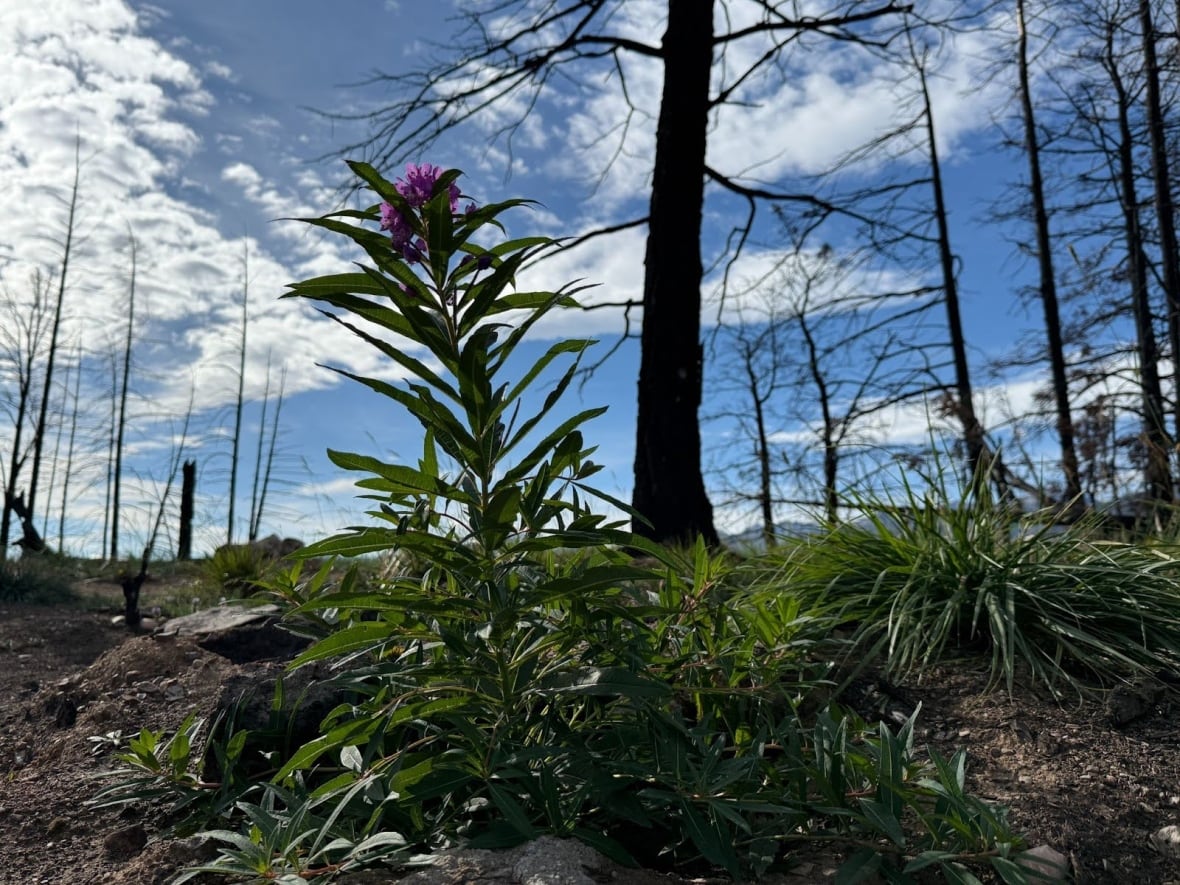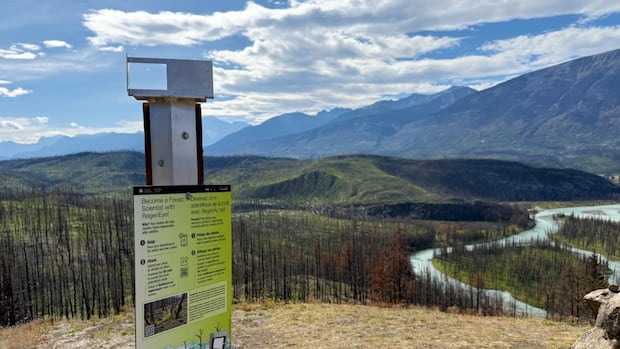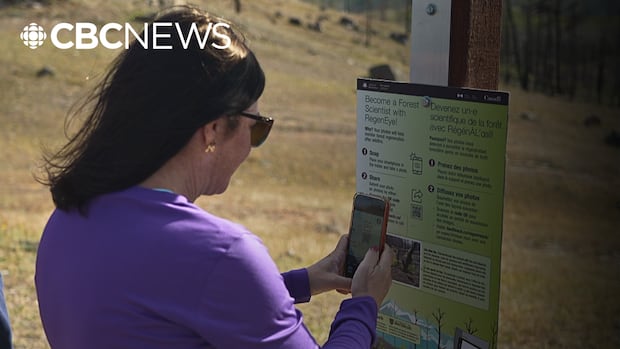As visitors at Old Fort Point look out at the mosaic of burnt patches of forest from the Jasper wildfire, they see a vastly different landscape than they would have before July 2024. But that same barren view looks strikingly similar to photos taken in the early 1900s.
Now, as the Jasper landscape begins to regenerate in the wake of last year’s massive wildfire, people hiking the popular trail are getting the opportunity to participate in a citizen science project to help document the area’s rebirth.
“We get to see the landscape change before our eyes and be a part of it, and I think that’s probably really rare and unique and different,” said Kevin Gedling, a Parks Canada communications and engagement officer.
Parks Canada and the University of Waterloo have teamed up to crowdsource photos from three locations on the hike — a view from the summit facing north, a panoramic view facing south, and a close-up shot of vegetation on the backside.
The project uses GeoReach, a University of Waterloo initiative that uses standardized imagery data to track changes in landforms across Canada, including glaciers, rivers, marshes, coastal shores, and now, post-forest fire regrowth.
Repeat photography is a method researchers use to assess how landspaces change and grow, by replicating certain aspects of an existing photo for basic comparison.
This summer Parks Canada installed three cellphone stands, each with a cradle and window for the camera, along the popular 3.8-kilometre hike, which starts just east of the Jasper townsite.
Visitors will take a photo from one of the stations, then scan the QR code to directly upload a photo, or visit the GeoReach website to share their photo with researchers at the University of Waterloo, citizen science groups and the general public. The website includes a gallery, displaying other photos uploaded to the site.
“It gives a really good opportunity for visitors and everyday people to just connect with the landscape and to connect with that process of ecological integrity monitoring and citizen science,” Gedling said.
This summer saw several new signs of life, with vibrant grass growing around the dead trees and wildlife moving through the landscape.
Purple fleabane and yellow arnica were among the first plants to crop up into the charred landscape, said Gedling.
A few fireweed plants have also been spotted, he said. The purple flowering plants are a sign of forest regeneration after a fire, and Gedling said he expects that, in a few years, it will be thriving in the nutrient-dense soil created by the fire.

Some sections of the Old Fort Point trail still have stands of aspen trees that appear intact but were essentially “baked to death” on the inside from the heat of the wildfire, said Gedling..
He also pointed out aspen “suckers,” some of which are already almost a metre tall, that use the existing root systems to regenerate without seeds.
The fresh grass that grows post-fire is better for the animals that eat it, said Jack Bentley, a Parks Canada interpreter.
He said the heat of the forest fire gives a response to the grasses, “to come back even faster so they grow even more nutritious which is good for all of the other species around who eat that grass like the elk and the deer.”
The landscape is back to “square one,” said Gedling, meaning it is now more of a grassland ecosystem, with deciduous trees as opposed to the coniferous-heavy forest that burned.
Parks Canada is asking people to help with a research project in the wake of the Jasper wildfire. Three posts were installed along a hike so visitors can log photos to track tree regeneration. Parks Canada took CBC for a hike to learn more about the project.
Old Fort Point is part of the montane ecosystem of the landscape — meaning the valley bottom — is “completely dependent on forest fires.”
Gedling said wildfires are part of a healthy cycle for a forest, although he acknowledges the devastation it brought to people who fought the fire and who live or work in Jasper.
The Jasper wildfire complex destroyed one-third of the townsite’s structures and displaced 2,000 people. One firefighter died from being struck by a fallen tree.
“But, you know, as far as a natural process is concerned, this is literally one of the better things that can happen to it,” he said.








